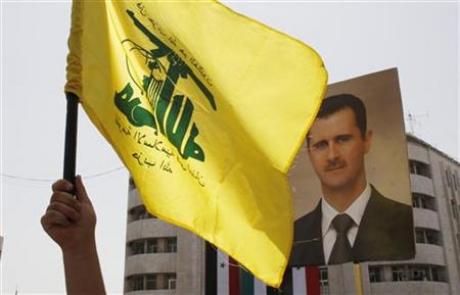written by Elias Frankel
Only a year ago, many Middle East experts were predicting the imminent demise of the Assad regime. In hindsight, those predictions were wildly unrealistic.
Or were they?
If this year’s events in the Syrian War hinged on one moment, it may have been in late April when the Iranian regime committed its proxy militia in Lebanon, Hezbollah, to the war in Syria — and also committed its own military advisors and commanders to the cause. Iran turned its most important foreign asset away from its sworn enemy to the South, Israel, to the East against another Muslim population.
This was a turn, more than two years into the bloody conflict, the Iranians and Hezbollah head Sayed Hassan Nasrallah may have been loathe to take, but one they felt was necessary. The Syrian regime in April was facing defeat with a steady stream of losses among personnel, territory, and resources and a threatened loss of control over the vital Damascus-to-Homs highway.
The Iranians and Hezbollah did not take half-measures, committing a significant portion of the Lebanese organization’s troop strength to the war. What they expected was quick and overwhelming victory. What they got was a Vietnam-like quagmire, sapping Hezbollah of thousands of its fighters and top echelon commanders.
The extent to which Hezbollah and its partners among Iraqi Shia militias have had to be used, as the vanguard of military operations on behalf of the regime, points to a seriously atrophied and ailing Syrian military. It’s “Weekend at Bernie’s” in Damascus, with Hezbollah propping up Assad’s military power. Should they pull out, the President will face quick collapse.
Recent compilation of slain Hezbollah fighters are in the hundreds, and a full casualty count is likely to be much higher. Their significant losses of manpower losses in the recent battles in Qalamoun and Damacus Rif and their trouble sustaining momentum around Safira and southeastern Aleppo Province point to a force that may still be motivated but is unable to advance.
Hezbollah can only win in two ways. If disproportionate force were used to overwhelm rebel forces in multiple locations, they could possibly cut off rebel supply lines and decimate ranks among the Sunni Islamist forces that are their greatest threat. That has not happened, and most likely the door closed on that option over the summer once the euphoria of their victory in Qusayr turned to stagnation.
The other option is for a political settlement in which the war ends and Assad and the Alawites remain in power in Syria. But this is a pipe dream. Jabhat al-Nusra head Abu Mohammed al-Joulani’s interview with Al Jazeera Arabic –– a rare event in and of itself from the enigmatic leader —– foresees a different direction in the battle, as he asserts that 70% of the fight against Assad is finished.
Taken in conjunction with the considerable rebel victory in East Ghouta over the last month, and the declaration of the start of Phase II of the battle, this displays an increasingly confident — if sometimes fragmented — rebel force that is beginning to draw the outlines of a reshaped war. With Adra to the north of Damascus in rebel control, advance in East Ghouta, and insurgent progress in the south in Daraa, one can see the opposition’s alignment of positions around the capital.
The most important target will be Damascus International Airport. Should the rebels succeed in taking it or simply rendering it inoperable, Damascus will be close to being surrounded. At that point, the rebels just need to wait for the city center to choke.
And Hezbollah will also be at the center of that vice.
This post was written by Elias Frenkel.

